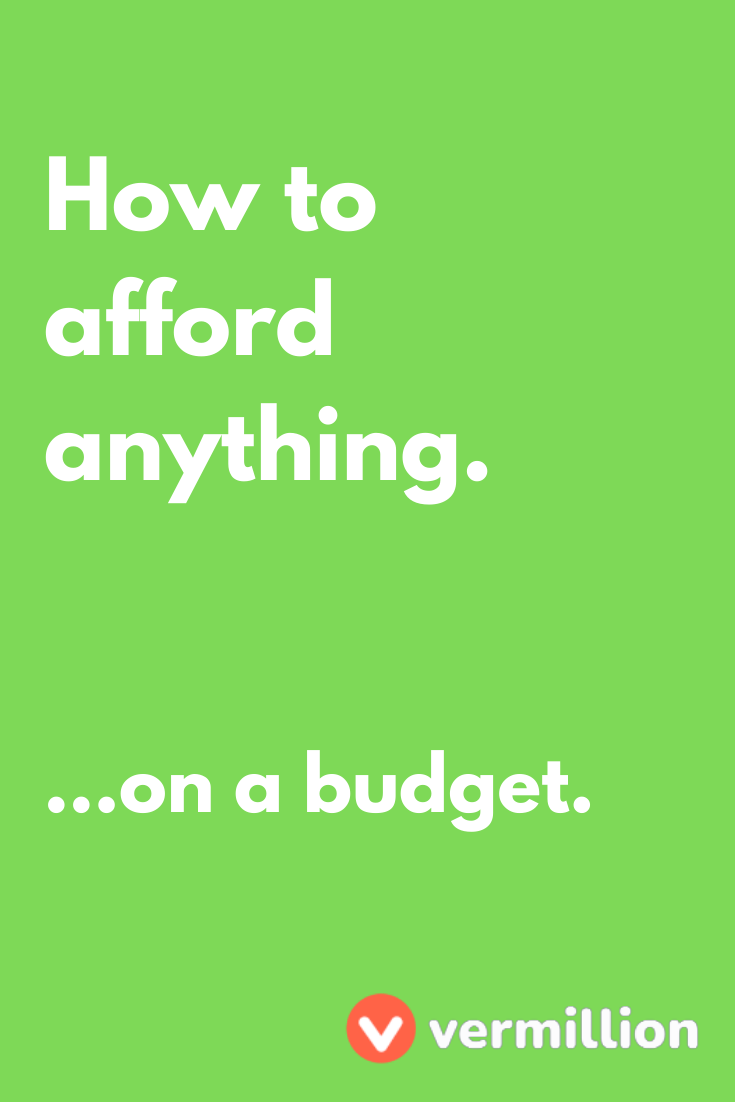How To Save Up For Large Expenses


We’re fortunate to earn money when you click on links to products or services we already know and love. This helps support the blog and allows us to continue to release free content. Read our full disclosure here.
Whether it’s a bill you pay only a few times a year, a much-needed car repair, or a surprise getaway – there are large expenses that we often need to budget for in advance.
There are two month-to-month types of expenses to budget for: Expected and unexpected. When we expect a large expense, we often know when and how much it will be. When a large expense is unexpected, we may only have a rough idea of our future needs.
When you first start budgeting, you may not be able to think of all the bills coming down the road. But as they happen throughout the year, you’ll be able to add new categories as needed and rework your budget to fit them.
Expect the Expected
Try to think of a few expenses that happen only a few times a year and how much money you usually need.
Then use this magic formula:
Yes, it’s really that simple.
Example #1: Water bill
My water bill comes to me quarterly – that is, every three months. It’s pretty consistent, about $300 each time. Every month, I budget $100 towards my water bill. Every three months, I have $300 to pay my bill – MAGIC.
Example #2: Car insurance
I get a discount for pre-paying six months at a time. The amount has changed depending on my coverage, but I look at what I paid last time as an estimate of what it will cost me next time. Last time it was $467.
Since this bill happens every six months, I budget $78 toward this category every month. After six months, I have $78 x 6 = $468 ready to go.
Example #3: Vacation
No matter what your vacation preferences are, you’ll need cash to pay for transportation, meals, and a place to stay.
Try to estimate how much you’ll need and divide that by the number of months until you leave – this is how much you should be saving at minimum every month. If you can save more in some months, that’s great! But don’t trick yourself into thinking you’ll save more later.
Expect the Uexpected
As is often the case, large expenses can be unexpected. There are the truly random events – like a popped tire, or a sudden illness. And then there are events that we know about but typically… forget.
For the truly unexpected, we can always keep an Emergency Fund – or Buffer, Bad Luck Fund, whatever you want to call it! A good rule of thumb is to save up about 3-6 months worth of expenses. When your budget hits a snag, simply pull money out of that category and put more back in the next month.
For the forgotten future expenses, I try to protect my future self with some generic categories.
Example #4: Gifts
I can’t be bothered to remember more than a few birthdays, nor would I want to create categories for each one. Instead, I budget a little bit more to my general spending category (Spending Money, Fun Money, Shopping, etc.) when a birthday or holiday rolls around.
If your budget is stretched thin and spending money on gifts is important to you – you might want to make a category called Gifts or Special Events and kick in $20/month to cover any upcoming events.
Example #5: Medical copay/ Vet visits/ Car repairs
These fall somewhere between forgotten and unexpected. In an ideal world, you would never need to take your car in for maintenance. In reality, we know that we will – we just don’t know when.
As with the above example, I would caution against creating more categories than you really need.
Depending on the frequency of the event and the relative cost compared to your emergency fund, you may be better off just saving more and letting these fly under the radar until they pop up. But that’s the key – you do have to actually save.
In Conclusion
Experienced savers will have a better idea of how much they should be stashing away with every paycheck to cover their unexpected expenses, but in time you’ll learn the nuances of your specific spending patterns!
For everything else, there’s the magic formula:
Got an expense we didn’t cover? Let us know in the comments!




